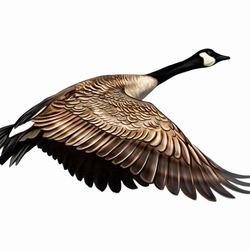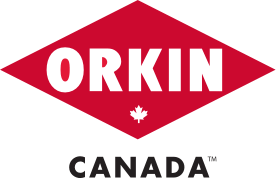Identification
- Colour Beige to light brown, black, and white
- Size From 76 cm to 110 cm long, with wingspan as long as 1.7 m
- Description Have a black head and neck with a white "chinstrap," while its body and wings are beige to light brown.

Why do I have Canadian geese
Canadian geese like to remain in open areas, near rivers, ponds, and marshes. They construct nests on small islets, at tree bases, in flower boxes, in pond plants, under shrubs, and on rooftops.
They feed largely on lawn grass but will also eat leaves, seeds, roots, berries, cattail, algae, sedge, tubers, roots, alfalfa, oats, wheat, corn, rye, and barley.
Should I be worried about Canadian geese
Canadian geese can carry and transmit pathogens resulting in serious diseases in humans and pets, including avian influenza, botulism, salmonellosis, duck virus enteritis, and cholera. They are also very noisy and aggressive and can injure humans and pets if they attack.
The geese overgraze on lawns and leave feces on walkways around hospitals, campuses, and public parks, potentially damaging the property. They also cause major agricultural damage by consuming crops, reducing the yield and increasing soil erosion.
It’s worth noting that once a mating pair of Canadian geese has finished building a nest, they will return to the same site every mating season from then on. For this reason, it’s important to take action as soon as possible after realizing you have a problem.
Canadian geese removal from your commercial property is best handled by a professional, licensed pest control service, which will be able to create a long-term deterrence plan and make sure all methods comply with the Migratory Birds Convention Act.
How to Get Rid of Canadian Geese
- Remove all food, including bird feeders for other species.
- Replace lawns with ivy or wildflowers.
- Let grasses grow tall, and plant shrubs and bushes.
- Install barriers around ponds or reservoirs.
- Install visible scare tactics or sound deterrents.
Habitat, Diet, and Life Cycle
What Do Canadian Geese Eat?
Canadian geese have a varied diet that changes based on their environment. Most often, it consists of a mix of aquatic plants, grasses, grains, and occasionally small insects and invertebrates.
Where Do Canadian Geese Migrate To?
Canadian geese are migratory birds that flock to warmer temperatures to escape harsh winter weather. The specific migration patterns can vary, but some populations migrate south to regions such as the southern United States or the eastern seaboard during the colder months. Come spring, they return to their breeding grounds.
How Long Do Canadian Geese Live?
The life cycle of Canadian geese begins when a pair of adult geese, often mated for life, select a suitable nesting site near water. The female goose lays a clutch of eggs in early to mid-spring, usually around four to seven. Both the male and female take turns incubating the eggs, which takes about 25 to 30 days.
Once the eggs hatch, goslings will be able to leave the nests shortly thereafter. Their parents will guide them to the water and provide food and protection. In the fall, the goslings are fully grown and undergo their first migration. The following spring, the geese will return and find their own mates, beginning the egg-laying cycle again. The lifespan of Canadian geese varies, but they can live upwards of 10 years.
In many ways, this is why an effective and long-term prevention plan for Canadian geese removal is necessary, due to their longevity and likelihood to continue to return to nesting grounds.
Commonly Asked Questions
How fast do Canadian geese fly?
Canadian geese are strong and adept fliers. They can fly at speeds of around 64 to 97 km per hour during migration. They have also been known to cover up to 1,000 km in a week while searching for suitable places to land and overwinter.
Is it against the law to harm a Canadian goose?
In Canada, Canadian geese are protected under the Migratory Birds Convention Act. This legislation makes it illegal to harm or kill migratory birds, including Canadian geese.
If you are looking for comprehensive geese removal on your property, it’s recommended to consult a licensed pest control service that has the necessary permits to do so. At Orkin Canada, our team is experienced in dealing with Canadian geese and carries all applicable licensing to deal with the removal and relocation of these birds.
Other pests related to Canadian Geese
100% Satisfaction or Money Back Guarantee
Resolving your pest problem is our #1 priority. If re-treatment is required, we'll provide immediate services at no extra cost. If your expectations are not met, we guarantee a full refund of your service payment.
Remove pests from your home, and stop them from coming back
We work hard to listen, understand and assess your unique situation. Request a free, no-obligation estimate today for a customized pest program that fits your needs.
Request a Free Home EstimateRequest a Free Business Consultation

